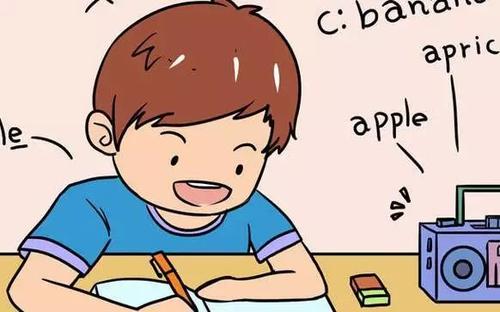先生不应该专教书,他的责任是教人做人;学生不应该专读书,他的责任是学习人生之道。下面是课件范文网小编为您推荐初二英语备课教案三篇。

初二英语备课教案1
1. 教材分析
仁爱版初中英语教材共六册,每册由四个模块组成,每个模块由单元----话题----功能---任务构成,编写思路清晰,符合学生的认识发展规律.八年级英语下册第六单元Topic1 Section A讲述了让学生学习如何用英语谈论旅游,并收集旅游信息。它由3部分组成,用1课时完成。通过学习Section A,学生可以更多的了解旅游知识并提高实际能力;动词不定式是本节课的重点语法项目。
2.教学目标
(1).知识目标
要求学生牢记Section A所有新学的四会单词.短语和重点句型;掌握不定式“to do”的用法。
(2).技能目标:
能用英语与他人谈论关于旅游的话题。培养学生提高语言交际能力,能在小组中积极与他人协作,从而开阔自己的视野,扩大知识面。
(3).情感目标
培养学生爱护大自然,热爱旅游.积极参与课堂上各种英语实践活动的兴趣。培养学生分工合作和团体协作精神。
3.教学重点和难点
(1).重点:谈论关于旅游的话题。
(2).重点和难点:不定式“to do”的用法。
二.说学情
1.学生对旅游较感兴趣,但对旅游知识了解较少。
2.学生的词汇量掌握不多。
3. 学生平时较少用英语与他人交谈并表达信息.。
三.说教法学法
按照课程改革的要求,遵循“老师由主演变导演,学生由配角变主角”的角色转换,采用把课堂交给学生的教学理论,我运用自由讨论.分组工作.结对练习.问答练习等方法,借助多媒体、录音机,图片等教学手段,设置特定的语言环境,使学生在轻松愉快的气氛中理解.运用英语。
四.说教学程序
我设计了以下的步骤来训练学生的听.说.读.写的能力,尤其是他们“说”的能力。
(一)温故知新
(1).请两位学生用上节课重点句型号,分别复述Unit 5 Topic3 Section D 1a
(2).教师与学生之间进行问答对话,让学生谈论关于他们最喜爱的旅游方式。 设计意图:巩固上节课学过的知识,为学习新课铺垫。
(二)情景导入
用多媒体展示一些关于旅游和交通的图片,来引起学生的兴趣,并由此教学本节课
的新单词,如:field ,trip ,cycle ,vehicle ,airline等。
设计意图:通过用多媒体展示学生熟悉的交通工具图片,激发学生的学习兴趣,轻松掌握新单词,顺利带入新课。
(三)重点呈现
1、展示多媒体( Flash课件)1a,并回答以下问题:
(1)Where will they go?
(2)What will Kangkang and Michael do?
(3)What will Helen do?
(4)How about Jane?
设计意图:应用多媒体展示,形象直观,给学生予视、听训练,根据情景对话,通过问答活动,以达到提高学生的“听.读”能力。
2、讲解重点.难点
(1)动词不定式“to do"的用法
a)不定式作主语
b)不定式作定语
c)不定式作目的状语
d)不定式作宾语
(2)It’s too+形容词+(for sb.)+to do sth.的句型
设计意图:训练学生理解和应用语言点的能力。
(四)知识巩固
1、放录音,让学生听并跟读
2、找出重要句型
3、给学生一点时间完成1b,然后用多媒展示的画面,请两组学生用带有“to do "的句子表演对话。
设计意图:我想知道我的学生是否真正了解整个对话的内容,并掌握了这节课我所传授的知识。此外,我将把学生们找到的重点句型板书在黑板上,以便他们能够更简单地记忆。
(五)归纳总结
让学生交流本节课所学的知识,教师除了板书所呈现的重点.难点内容外,又以“堂堂清”的形式进行当堂操练,进一步巩固对本课内容的理解和运用。
展示板书(根据本课的重点难点)
Unit 6 Topic 1 Section A
1.I have some exciting news to tell you !
2.It’s too far for cycling 。
3.Do you know the best way to get there?
4.It’s hard to say。
5.We’ll decide on the best way to go on our trip。
2、家庭作业
(1)抄写新单词和本节课重点句子。
(2)给学生看四幅名胜古迹的图片,让学生回去查找信息,看看哪个地方最值得参观,并编成对话,内容包括旅游的时间.方式和票价(要求用动词不定式)。
设计意图:
五、教学评价:
本课以课改为目的,结合教材重点.难点及英语学科的特点,利用多媒体辅助教学,体现“自主,合作,探究”的学习方式,它较之传统教学更能使每位学生都能积极参与到课堂学习及课外活动中去。使学生的听.说 .读.写能力得到全面提高,在愉快轻松的氛围中掌握知识。与此同时,带来的问题是:每个学生接受知识,获取知识的方式与快慢存在着差异,这就决定了在学习成效上的差别。为此,老师要对每个学生作深入了解,并制定相应“水平线”以鼓励学生超越。
初二英语备课教案2
教材分析
1.本节内容就是为了进一步巩固主句为一般过去时的宾语从句,是对上一节课的巩固,并为以后的学习做了铺垫。这节课学的知识是本册书的重点之一。
学情分析
1,通过练习发现学生宾语从句并不是很懂,做起题来很蹩脚。
2,由于宾语从句是新学的语法项目,学生在日常学习中也接触,但由于在语文中并不涉及,这为英语中宾语从句的学习设置了障碍。所以学生学起来有一定的难度。
教学目标
知识与能力目标:
1,学习新单词和主句为一般过去时的宾语从句;2,继续谈论时装表演,了解各民族服装;3,通过本课学习,使学生对中国服装文化能有更深刻的了解。
过程与方法:
让学生在反复练习的基础上,能够很自然的掌握宾语从句。
情感态度和价值观:
通过対本课的学习,让学生了解民族服装文化,加强对民族服装文化的了解,增进民族感情。
教学重点和难点
主句为一般过去时的宾语从句
教学过程(本文来自优秀教育资源网斐.斐.课.件.园)
Step 1. Review the object clauses of which the main clauses are in the past simple tense..
Step 2. Lead in the new lesson and learn new words.
Step 3.Presention:
1.Listen to the tape and pay attention to the pronunciation. Read 1a in different ways to learn it
2. Let the students answer some questi___. And then fill in blanks according to 1a.
Step 4. Practice
Lead into Part 2and practice the object clauses of which the main clauses are in the past simple tense.
Step 5.C___olidation :
Step 6.Homework:
教学环节
一,复习
二,导入三,呈现
四,练习五,巩固六,作业
复习宾语从句,然后利用宾语从句引入新课,并展示图片,学习生词,进而学习少数民族服装,处理第三部分。引入1a后,让学生反复练习宾语从句,在深入感知1a后,完成1b。导入第二部分后,进一步巩固宾语从句。
宾语从句的练习会阻力重重,对于少数民族服装的了解不是很多。
利用多媒体进行教学让学生很直观的认识民族服装,增加英语学习兴趣。
板书设计(需要一直留在黑板上主板书)
Unit 8 Topic 3 Let’s go and watch the fashion show
-----Setion B
生词:catwalk cheongsam traditional minority backstage signature
短语:in the center of ; in the world of ; traditional dress ;
high fashion; minority costume; another three models; as for
句型:I guess it’s a traditional Russian costume.
She said Jane knew a lot about fashion.
---What did Jane ask the model?
---She asked…
---What did the model say?
---She said…
学生学习活动评价设计
在学习的过程中,只要学生积极参与,教师和学生都应给予积极的学生以积极的评价,增加学生学习英语的兴趣。
初二英语备课教案3
Unit 4 Why don’t you talk to yourparents?
Section A 1 (1a-2d)
一、教学目标:
1. 语言知识目标:
1) 能掌握以下单词:allow, wrong, guess,deal, work out
能掌握以下句型:
① —What’swrong?
—I’m really tried because I studied until midnight last night.
② You could give him a ticket to a ball game.
③ I think you should ask your parents forsome money.
④ Why don’tyou talk to him about it?
2) 能了解以下语法:
(1)能够运用所学知识谈论问题和困难、提出建议并做出选择;
(2)能根据对方所提出的问题,给出一些合理的建议。
2.情感态度价值观目标:
培养学生良好的合作意识,鼓励学生大胆表达自己的想法和意愿。正确认识生活中的一些困难,能采用正确的方式解决生活中的问题。
二、教学重难点
1. 教学重点:
1) Talk about the problems.
2) Learn the new languagepoints.
2. 教学难点:
能根据对方所提出的问题,给出一些合理的建议。
学会表达建议的一些方式。
三、教学过程
Step 1 Warmingup
1. 导入学生们平时在学校和生活中存在的问题。
T: What’s the matter/ What’s wrong?
S: He has too much homework to do.
T: Do he like to do it?
S1:No, he doesn’t. Because hedoesn’t have any free time to do things he likes.
…
Step2 Talking
1. Lookat these problems. Do you think they are serious or not? Ss discuss withtheir partners and give some advice.
① I have to study too much so I don’t getenough sleep.
② Ihave too much homework so I don’t have any free time to do things I like.
③ Myparents don’t allow me to hang out with my friends.
④ Ihave too many after-school classes.
⑤ I got into a fight withmy best friend.
Step 3 Listening
1. T: Tell Ss to read the sentences in 1a again. Make sure they know the meaning ofthe sentences.
2. Play the recording forthe Ss to listen and circle the problems you hear in 1a.
3. Play the recordingagain. Check the answers with the Ss.
Step 4 Pair work
1. Let Ss read the conversationin the box.
2. Use the information in 1a to make other conversations.
3. Let some pairs act outtheir conversations.
e.g. A: What’swrong?
B: I’mreally tied because I studied until midnight last night.
A: Why don’t you go tosleep earlier this evening?
4. Language points
1) allow v. 允许;准许
allowsb. (not) to do sth. (不)允许某人做某事
e.g. My parents don’tallow me to stay up late. 我父母不允许我熬夜。
Mr. Smith allowed Mike to drive there. 史密斯先生允许迈克开车去那里。
2) wrong adj. 错误的;不对的
= notright
e.g. Some words on theadvertisement are wrong. 广告上的一些字错了。
Step 5 Listening
Work on 2a:
T:Peter has some problems. What advicedoes his friend give him? Fill in the blanks with could or should.
1. Let Ss read the sentences in 2a.
2. Play the recording for the Ss to listen and writethe words in the blank.
3. Play the recording again to check the answers.
Work on 2b:
1. Let Ss read the sentences below. Explain somemain sentences for the Ss. Make sure they know the meaning of each sentence.
2. Play the recording forthe Ss to write the letters (a-e) next to the advice in 2a.
3. Play the recording againto check the answers.
Answers: 1. d 2. e 3. a 4. c 5. b
Exercise:
Listen again. Fill in theblanks.
Boy 2 had a ______ with his best friend. He could______ him a letter. But he isn’t good at writing letters. He ______ call him____, but he doesn’t want to talk about it on the ______. He ______ talk to himso that he can say he’s sorry but it’s not ____. He ______go to his house buthe doesn’t want to _______ him. He could take him to the _____________, but hedoesn’t want to wait that long.
Step 6 Pair work
1. Tell Ss to make aconversation using the information in 2aand 2b.
2. Let one pair to read outtheir conversation first.
3. e.g. A: What’s thematter, Peter?
B: Ihad a fight with my best friend. What should I do?
A: Well,you should call him so that you can say you’re sorry.
B: ButI don’t want to talk about it on the phone.
4. Ss act the conversationin pairs. Ask some pairs to act out their conversations.
Step 7 Role-play
1. Ss read theconversations and try to understand the meaning.
2. Read the conversationafter the teacher.
3. Practice the conversation with their partner.Then let some pairs to act out the conversation.
4. Explain some new wordsand main points in the conversation.
(1) guess
e.g. Let us guess the height of the building.
让我们来猜一下这个建筑物的高度。
(2) big deal, deal
big deal是英语中的一个固定搭配,表示 “重要的事情或状况”,多用于非正式交流。作否定用法时,常说It’s not a big deal或It’s no big deal.表示说话人并不认为某事有什么了不起。
e.g. There's a soccergame on TV this evening but I don’t have to watch it. It’s no big deal. 今天晚上电视上有一场足球赛,但我不一定要看。没什么大不了的。
It’s a big deal, David, bigger than you know.
这事挺重要的,戴维,比你所知道的要重要。
What's the big deal? It’s only a birthday, not the end of the world.
有什么了不起的?这不过是个生日,又不是世界某日。
(3) work out
work out 解决(问题);算出
e.g. Mike worked out thedifficult problem by himself.
迈克自己算出了那道难题。
Isit possible to work out the problem? 有可能解决这个问题吗?
Homework:
Write three conversationsabout your problems and your friends’ suggestions.
A: I have too manyafter-school classes.
What could I do?
B: You could …
Section A 2 (3a-3c)
一、教学目标:
1. 语言知识目标:
1) 学习掌握下列词汇:get on with; relation, communication, argue, cloud, elder, instead, whatever, nervous, offer, proper, secondly, communication, explain, clear
2)阅读短文,能按要求找到相应的信息。
3)通过阅读提高学生们的阅读能力。
4) 了解在如果生活中发生了一些不尽如人意的问题,应当如何面对理性地去解决。
2. 情感态度价值观目标:
人的一生并不都是一帆风顺的,难免有一些挫折的困难,如果生活中发生了一些不尽如人意的问题,我们学会冷静对待,学会合理的办法去理性地去解决。
二、教学重难点
1. 教学重点:
1) 掌握本部分出现的生词和词组,达到熟练运用的目标。
2) 阅读短文,获得相关的信息。通过阅读练习,来提高阅读能力。
2. 教学难点:
1) 阅读短文,获得相关的信息的能力。
2) 理解并运用所学的词汇及表达方式。
三、教学过程
Step 1 Revision
Some Ss give some problems. Other Ss give advice.
Problems and advice:
1. I have to study too much so I don’t get enough sleep.
Why don’t you go to sleep earlier this evening?
2. I have too much homework so I don’t have any free time to do things I like.
Why don’t you go camping with your friends this weekend?
3. My parents don’t allow me to hang out with my friends.
Why not read some interesting books at home?
4. I have too many after-school classes.
Why don’t you talk about it with your parents?
5. I got into a fight with my best friend.
Why not call him up?
Role-play the conversation of 2d.
Step 2 Presentation the new words
1. relation n. 关系;联系;交往
e.g. Their relation seemed quite close. 他们的关系看起来很亲密。
2. argue v. 争吵;争论
e.g. The couple began to argue about the child’s education.
那对夫妇开始就孩子的教育问题争吵。
3. proper adj. 正确的;恰当的
e.g. It’s not proper to visit a friend too late in the evening.
太晚了,去看朋友不合适。
4. nervous adj. 焦虑的;担忧的
e.g. Don’t be nervous. It is just a small test. 不要紧张。就是个小测试而已。
5. clear adj. 清楚易懂的;晴朗的
e.g. The sun shone out of a clear sky. 天空晴朗,阳光灿烂。



